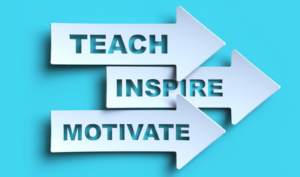
11 Innovative Ways to Reward and Recognize Employees
Recognition matters. We hear it over and over again in leadership books and best practices articles. It makes sense to recognize employees early and often.

Recognition matters. We hear it over and over again in leadership books and best practices articles. It makes sense to recognize employees early and often.

Toxic cultures are like dark clouds looming over the world of work. Wherever they go, they wreak havoc with employee wellbeing. That’s not an overstatement.

Anyone who says being a leader is easy is simply not being honest. Leadership is hard. Yes, I said it. And that shouldn’t shock anyone.

In the aftermath of the pandemic, employers have received a massive wake-up call — in more ways than one. Who knew so many people would

In recent years, employee experience has taken center stage as a primary indicator of organizational success. As a result, HR and business leaders increasingly want to

As artificial intelligence becomes more deeply embedded in everyday workflows, it is rapidly transforming the way businesses operate. For example, the recent rise of generative

When employees feel disconnected from their jobs — or their work doesn’t bring a sense of purpose to their lives — they’re more likely to

You’re a business leader. You believe in your company with all your heart. Your commitment to the organization’s mission drives you to aim high, work

We often hear that people don’t leave jobs, they leave managers. We all get what that means. But what does it mean for those of

Leaders, do workforce engagement issues keep you up at night? If not, here’s a powerful wake-up call from Gallup. Last year, the global employee engagement

Sponsored by The Culture Platform What tools actually help managers manage their people? That’s the most important question every organization needs to ask itself as the

Is your organization striving to create a more inclusive work culture? If so, you’re not alone. Many HR and business leaders are committed to improving

When the pandemic arrived in 2020, everyone’s definition of work changed in a heartbeat. Most people headed home, leaving their offices, cubicles, water coolers, and

In today’s diverse, dynamic work world, employers increasingly recognize the transformative power of diversity, equity, and inclusion. Still, concerns often arise about the cost of

Diversity, Equity, and Inclusion (DEI) is by definition a people-centered business endeavor. So at first glance, the phrase “people-first DEI” may seem redundant. But that’s

When it comes to implementing a successful engagement strategy, HR teams can’t afford to ignore employee expectations. Yet, research suggests that too many organizations forget

A strong internal communications function is essential for every company, both culturally and operationally. It helps keep employees aware of relevant news and updates, excited

If you lead a business of any kind, it’s essential to understand the factors that influence employee satisfaction in your organization. This kind of insight

The world of work is a little rough these days, to say the least. Companies large and small continue to scramble in the face of

For most office-based employees, “work” no longer represents a physical location. In fact, 84% of people who worked remotely during the pandemic said they intended

Long before the pandemic, many organizations struggled with employee engagement. But now, it’s an even tougher hill to climb. Hybrid and remote work have become

Keeping valued employees onboard is top-of-mind for many organizations these days. But what kind of employee retention strategies are actually working? To find out, we

Without a doubt, employee surveys are the most widely used employee engagement tool. Surveys make it possible for employers to gather workforce feedback quickly and

Numerous jobs can be performed remotely or on a hybrid schedule. Still, more than 70% of full-time roles require people to work onsite. For instance,

For more than two years, employees have slowly — and sometimes reluctantly — returned to their workplaces. Leaders have been trying to instill a sense